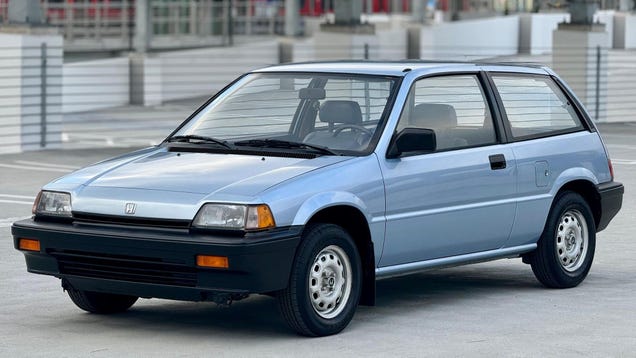The Future of Automotive Design: Are We Ready for a Shift Away from Giant Trucks and SUVs?
The automotive landscape is continually evolving, shaped by consumer preferences, regulatory changes, and broader societal trends. One of the most significant shifts in recent years has been the rise of large trucks and SUVs, which have dominated the market. However, as we look to the future, many experts believe that this trend may be on the verge of a dramatic transformation. This article explores the potential factors driving a shift away from these behemoth vehicles and what this could mean for consumers and the environment.
Understanding the Current Landscape of Vehicle Preferences
In the past decade, the popularity of trucks and SUVs has surged, with sales figures reflecting a clear consumer preference for larger vehicles. According to data from the Automotive News Data Center, in 2022, trucks and SUVs accounted for over 75% of new vehicle sales in the United States. This trend is fueled by various factors, including perceived safety, increased cargo capacity, and the allure of rugged aesthetics.
However, this dominance comes with significant drawbacks. Larger vehicles tend to have poorer fuel efficiency, contributing to higher carbon emissions. Additionally, their size can pose dangers to pedestrians and smaller vehicles, leading to a growing concern about road safety. As urban areas become more congested and environmental awareness increases, the question arises: will consumers continue to favor larger vehicles, or will we see a resurgence of smaller, more efficient cars?
The Role of Regulations and Environmental Concerns
One of the most pressing factors that could influence a shift away from giant trucks and SUVs is the introduction of stricter regulations aimed at reducing carbon emissions. Governments worldwide are increasingly recognizing the need to combat climate change, and many are implementing policies that target vehicle emissions. For instance, the European Union has set ambitious targets to cut greenhouse gas emissions from cars and vans by 55% by 2030.
In the United States, the Biden administration has proposed new fuel efficiency standards that could significantly impact the types of vehicles manufacturers produce. As these regulations become more stringent, automakers may be compelled to pivot towards smaller, more efficient models to comply with the law and avoid hefty fines. This regulatory pressure could catalyze a broader cultural shift in consumer preferences, encouraging individuals to consider the environmental impact of their vehicle choices.
Consumer Sentiment: A Desire for Simplicity and Efficiency
Beyond regulations, there is a growing sentiment among consumers for simplicity and efficiency in automotive design. As urban living becomes more prevalent, many individuals are seeking vehicles that are easier to maneuver and park in crowded city environments. Compact cars, electric vehicles (EVs), and hybrids are gaining traction as practical alternatives to larger models.
A recent survey conducted by the Pew Research Center found that 54% of Americans are open to purchasing an electric vehicle, citing environmental benefits and lower operating costs as primary motivators. This shift in consumer sentiment suggests a potential market for smaller, more efficient vehicles that align with the values of modern consumers.
Case Studies: Brands Leading the Charge
Several automotive brands are already recognizing this shift and adapting their strategies accordingly. For example, Honda has long been known for its compact and fuel-efficient vehicles, such as the Honda Civic and Honda Fit. These models not only appeal to environmentally conscious consumers but also to those seeking affordability and practicality.
Similarly, Tesla has revolutionized the market with its electric vehicles, which are designed to be both efficient and stylish. The success of the Tesla Model 3, a compact electric sedan, demonstrates that there is a robust demand for smaller vehicles that do not compromise on performance or technology.
The Future: A Balanced Automotive Ecosystem
While it is unlikely that trucks and SUVs will disappear entirely, the future of automotive design may see a more balanced ecosystem that includes a diverse range of vehicle sizes and types. As regulations tighten and consumer preferences evolve, automakers will need to innovate and adapt to meet the changing demands of the market.
In this new landscape, smaller cars, electric vehicles, and hybrids could play a crucial role in reducing emissions and promoting sustainability. The automotive industry must embrace this shift, focusing on creating vehicles that are not only efficient but also cater to the lifestyle needs of modern consumers.
As we look ahead, it is clear that the era of giant trucks and SUVs may not last forever. Whether driven by regulatory changes, consumer preferences, or environmental concerns, the automotive market is poised for transformation. Embracing this change could lead to a future where smaller, simpler cars become the norm, paving the way for a more sustainable and efficient automotive landscape.

